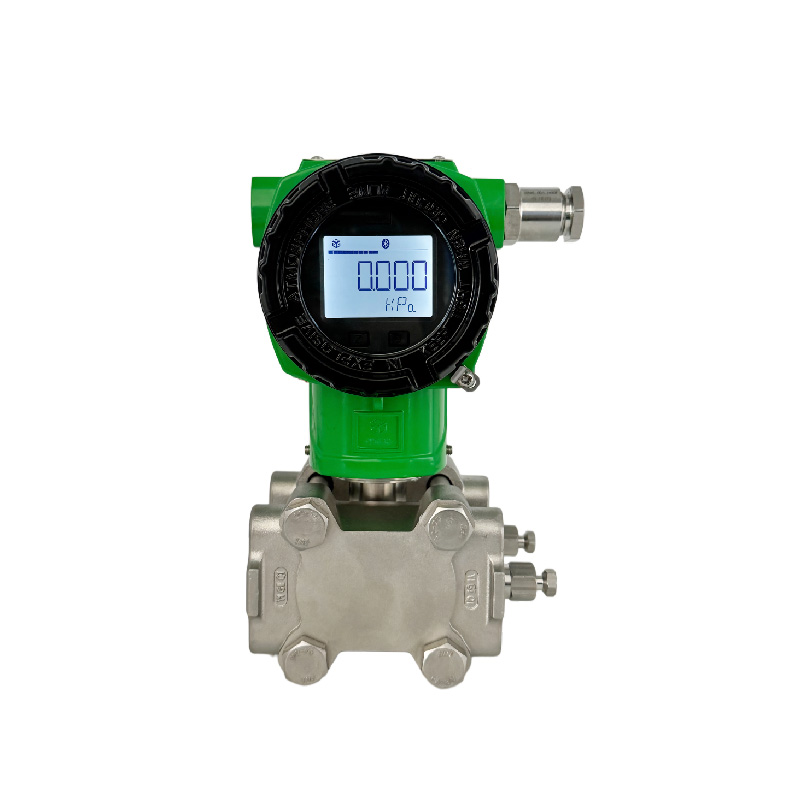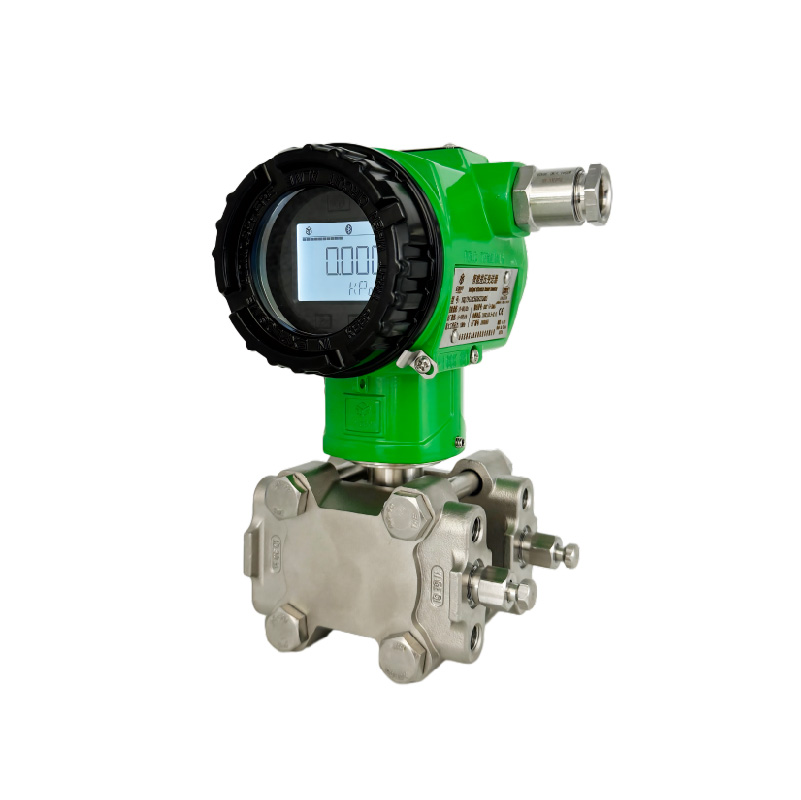In the field of industrial process control, the differential pressure transmitter is a widely used measuring instrument for measuring parameters such as fluid flow rate and level. However, in actual working conditions, the phenomenon of pulsating flow often adversely affects the measurement accuracy of the differential pressure transmitter. Pulsating flow refers to a flow state in which the fluid’s pressure, velocity, and other parameters change periodically or non-periodically over time. This unstable flow characteristic can cause fluctuations in the differential pressure signal, thereby reducing the accuracy of measurement. Therefore, discussing how to improve the measurement accuracy of differential pressure transmitters under pulsating flow conditions has important practical significance.
The following is the mechanism by which pulsating flow affects the measurement accuracy of differential pressure transmitters:
1.Pressure fluctuation interference:
Pulsating flow causes fluctuations in the pressure within the pipeline, and the differential pressure signal perceived by the differential pressure transmitter also changes rapidly accordingly. For instance, in certain chemical processes, due to the periodic operation of pumps or the rapid opening and closing of valves, the fluid pressure fluctuates up and down in a short period of time. This frequent pressure variation makes it challenging for the differential pressure transmitter to accurately capture a stable differential pressure value, leading to significant errors in the measurement data.
2.Frequency response problem:
The differential pressure transmitter itself has a certain frequency response characteristic. When the frequency of the pulsating flow is close to or beyond the inherent frequency or the effective measurement frequency range of the differential pressure transmitter, the transmitter is unable to correctly respond to the fluid’s differential pressure changes. Similar to a resonance phenomenon, at inappropriate frequencies, the transmitter’s output signal may be amplified or distorted, thereby affecting the measurement accuracy.
3.Fluid dynamics factors:
The presence of pulsating flow alters the fluid’s flow state within the pipeline, such as generating vortices, backflow, and other phenomena. These complex fluid dynamics changes interfere with the normal measurement function of the differential pressure transmitter, as the measurement principle of the differential pressure transmitter is based on the assumption of stable fluid flow. For instance, in the pipelines of some HVAC systems, the vibration of fans causes the air to form pulsating flow, and the vortices within can cause the differential pressure signal to become chaotic.
Then, what are the technical measures to improve measurement accuracy? Please read on.

Install damping devices
1.The principle of a damper:
Damping devices can effectively reduce the impact of pressure fluctuations on differential pressure transmitters. Their working principle involves consuming the energy of the fluid to decrease the amplitude of the pulsating flow. For example, a liquid damper has a compressible element or a special channel structure inside; when pulsating flow passes through, part of the fluid’s kinetic energy is converted into other forms of energy (such as thermal energy), thereby reducing the pressure fluctuations.
2.Selection and Installation of Dampers:
When selecting a damper, parameters such as the damping coefficient and response time need to be considered. The damping coefficient should be determined based on the characteristics of the pulsating flow. Generally, for high-frequency and large-amplitude pulsating flow, a damper with a higher damping coefficient should be chosen. The installation location is also crucial; it is typically best to install the damper as close as possible to the pressure tapping points of the differential pressure transmitter. This ensures effective damping of the differential pressure signal before it enters the transmitter.
Optimizing the Transmitter’s Frequency Response
1.Selecting a transmitter with high frequency response:
Some advanced differential pressure transmitters have a wider frequency response range and higher response speed. In applications with significant changes in pulsating flow frequency, such as certain high-speed fluid conveyance systems, selecting these transmitters can better adapt to the dynamic changes of the fluid. These transmitters typically employ advanced sensor technology and signal processing algorithms, allowing for accurate measurement of differential pressure signals across a broad frequency range.
2.Performing frequency compensation on the transmitter:
By adding a frequency compensation module to the transmitter’s signal processing circuit, its frequency response characteristics can be improved. The frequency compensation module can adjust the differential pressure signals of different frequencies according to a pre-set algorithm. For instance, when the frequency of the pulsating flow is detected to be higher than the normal range, the compensation module can attenuate the signal or adjust its phase, making the transmitter’s output signal closer to the actual differential pressure value.
Reasonable pipeline layout and pressure tapping method.
1.Pipeline layout design:
When designing a pipeline system, efforts should be made to minimize factors that may cause pulsating flow. For instance, avoid sharp bends in the pipeline and sudden changes in pipe diameter, as these geometric alterations can easily lead to unstable fluid flow. For unavoidable pipeline layouts, such as connecting pipes with different diameters, transition sections can be used to smooth the transition and reduce fluid disturbances.
2.Optimizing the Pressure Tapping Method:
The correct pressure tapping method is crucial for improving measurement accuracy. Under pulsating flow conditions, the symmetrical pressure tapping method should be used, which involves setting up pressure taps at symmetrical positions on both sides of the pipeline. This can offset the impact of pulsating flow on the differential pressure signal to some extent, as the pressure fluctuations at symmetrical positions are ideally synchronized. By differential calculation, a more stable differential pressure signal can be obtained.

Digital filtering technology can be used to filter the fluctuating signals output by the differential pressure transmitter. Common digital filtering methods include low-pass filtering, high-pass filtering, and band-pass filtering. In the case of pulsating flow, low-pass filtering is a commonly used method. It can filter out the high-frequency fluctuation components of the signal, retaining the relatively stable low-frequency signals, thereby obtaining smoother differential pressure measurement values. For example, by setting an appropriate cutoff frequency, the pulsating signal components above this frequency can be attenuated, resulting in more accurate measurement data.
In some complex industrial environments, using digital filtering alone may not completely eliminate the impact of pulsating flow. In such cases, combining the advantages of analog and digital filtering can be beneficial. Analog filters can perform preliminary filtering on the signal before it enters the transmitter, removing some of the high-amplitude high-frequency interference. Then, the digital filter inside the transmitter can further refine the signal processing, resulting in a better filtering effect. This dual approach leverages the strengths of both analog and digital filtering to enhance the measurement accuracy and stability of the differential pressure transmitter in the presence of pulsating flow.
Enhancing the measurement accuracy of differential pressure transmitters in the presence of pulsating flow is a comprehensive systems engineering task that encompasses mechanical design, fluid mechanics, electronic technology, and signal processing. Only through the implementation of diverse strategies, precise action, and collaborative efforts can we overcome the challenges of precision limitations. This will infuse accurate and reliable data “lifeblood” into industrial process control, enabling modern industry to advance robustly under complex conditions and stride towards a new era of high-quality, intelligent development.


